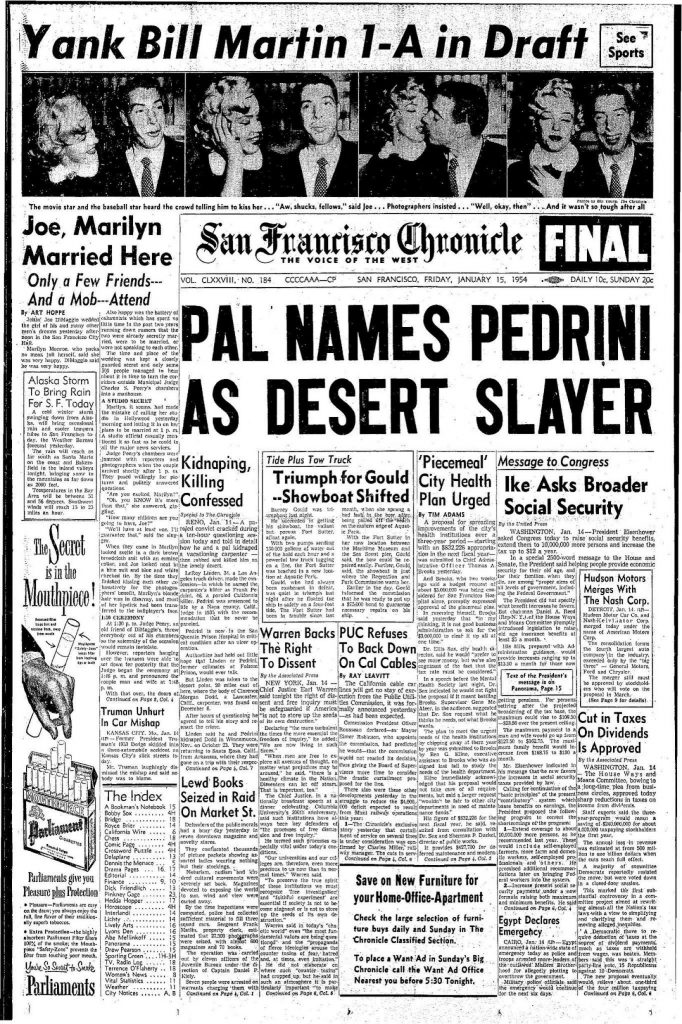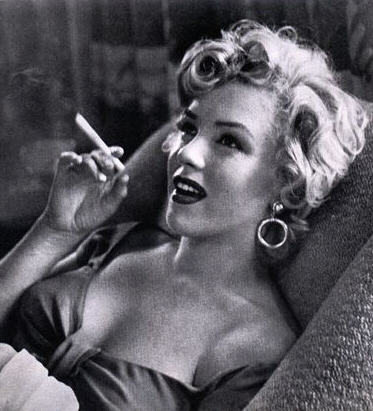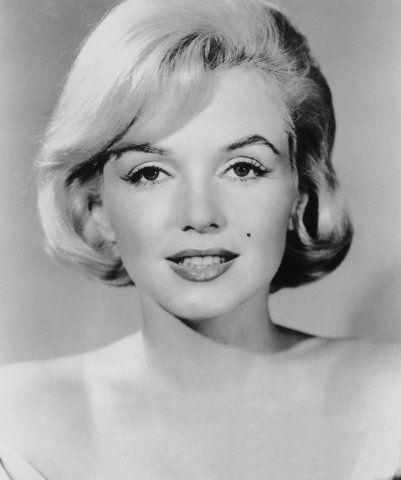The San Francisco Chronicle has reposted their front page from January 15, 1954 – the day after Joe DiMaggio married Marilyn at City Hall.
“’Joltin’ Joe DiMaggio wedded the girl of his and many other men’s dreams yesterday afternoon in San Francisco City Hall,’ the story read.
‘The time and place of the wedding was kept a closely guarded secret and only 500 people managed to hear about it in time to turn the corridors outside Municipal Judge Charles S. Peery’s chambers in a madhouse,’ The Chronicle’s Art Hoppe wrote.
‘Marilyn, it seems, had made the mistake of calling her studio in Hollywood yesterday morning and letting it in on her plans to be married at 1 p.m. A studio official casually mentioned it as fast as he could to all the major news services.'”
And just FYI, January 14 has seen some other significant events – including the release of Clara Bow’s It in 1926, and the publication of Sylvia Plath’s The Bell Jar in 1963 (less than a month after her suicide.)




